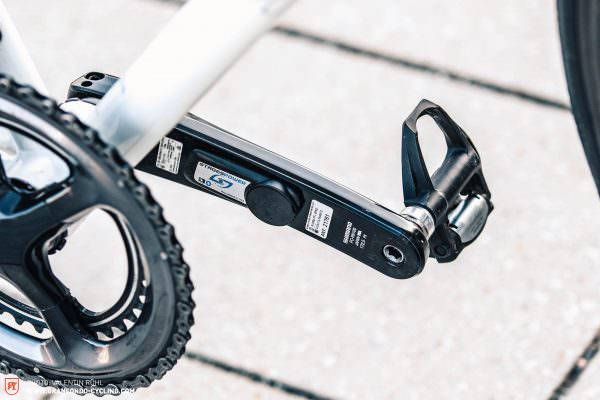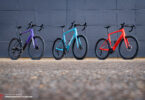The Lab: Stages Power LR Shimano Dura-Ace R9100 in review
In the “The Lab” we present the latest products and put them through their paces for you. Some undergo long-term tests, while we check others out only briefly. This time we reveal how the Stages Power LR Shimano Dura-Ace R9100 power meter fared.

Two are better than one! Stages Power made a name for itself for one-sided, i.e. non-drive side power meters. For the past year, the Colorado-based company has also been offering two-sided models. The American brand uses standard cranks and fits them with its power meters. With the one-sided variant, the choice is huge, with most Shimano, SRAM, FSA and Campagnolo cranks on offer. The double-sided setup is currently only available for Shimano Ultegra R8000 and Dura-Ace R9100 cranksets. Since Stages relies on both ANT+ and Bluetooth Smart to transmit the data, the power meter can be connected to any compatible smartphone or bike computer. The workmanship of the Stages is excellent and solves the issue of integration as elegantly as it is possible.
We couldn’t verify to what extent the temperature-regulated accuracy of +/- 1.5% specified by the manufacturer is correct, but for most hobby cyclists, it will be more important to determine their improvements in relation to their own starting point anyway. Since most riders will have only one bike with a power meter on it, the differences in accuracy from manufacturer to manufacturer also aren’t as critical.

Our test bike already had a Shimano Dura-Ace R9100 crankset, which is why fitting the power meter, i.e. swapping out both crank arms, was super quick – the existing bottom bracket remained in the frame. We connected the power meter via Bluetooth with the Wahoo app and the wattage was immediately displayed on our Wahoo ELEMNT. From now on the GPS computer and the power meter communicated via ANT +. Place the crank in the vertical 0° position to calibrate, and you’re ready to go.


You just can’t help it, the first thing you do is sprint as hard as you can to find out what your maximum wattage is. 1,687 watts. For 3 seconds. But what does that mean? Not much, at first. On the other hand, the insights provided by the Stages power meter about the pedal strokes themselves are much more interesting. In the case of our test rider, Ben, they’re not particularly round or evenly divided between the left and right side. This is where Ben sees the greatest advantage of the two-sided power meter. From now on, it is more important for him to work on getting an equally distributed “round” pedal stroke, for more efficiency and to protect his joints with smoother and higher-cadence pedalling.That may all sound trivial, but according to Ben, it helps to be reminded of your habitual mistakes after every ride. According to Stages, the power meter is IPX7 water resistant and our many rides through rain, moisture and cold have neither harmed the device nor caused any anomalies in the data.
With the LR Dura-Ace R9100 power meter, Stages Cycling deliver a contemporary measuring system that scores with its lightning-fast installation, minimal added weight and ease of use. The only drawback: the power meter can’t be fitted to your existing crankset.
Tops
- Simple installation
- Intuitive to use
- Compatibility and connectivity
- little added weight
Flops
- Can't be retrofitted to existing cranksets
- Danger of data obsession
Tester Ben
Duration 4 months
Price € 1.299
Weight Crank weight + 35 g (15 g left, 20 g right)
More Info stagescycling.eu
Did you enjoy this article? If so, we would be stoked if you decide to support us with a monthly contribution. By becoming a supporter of GRAN FONDO, you will help secure a sustainable future for high-quality cycling journalism. Click here to learn more.
Words: Photos: Valentin Rühl






